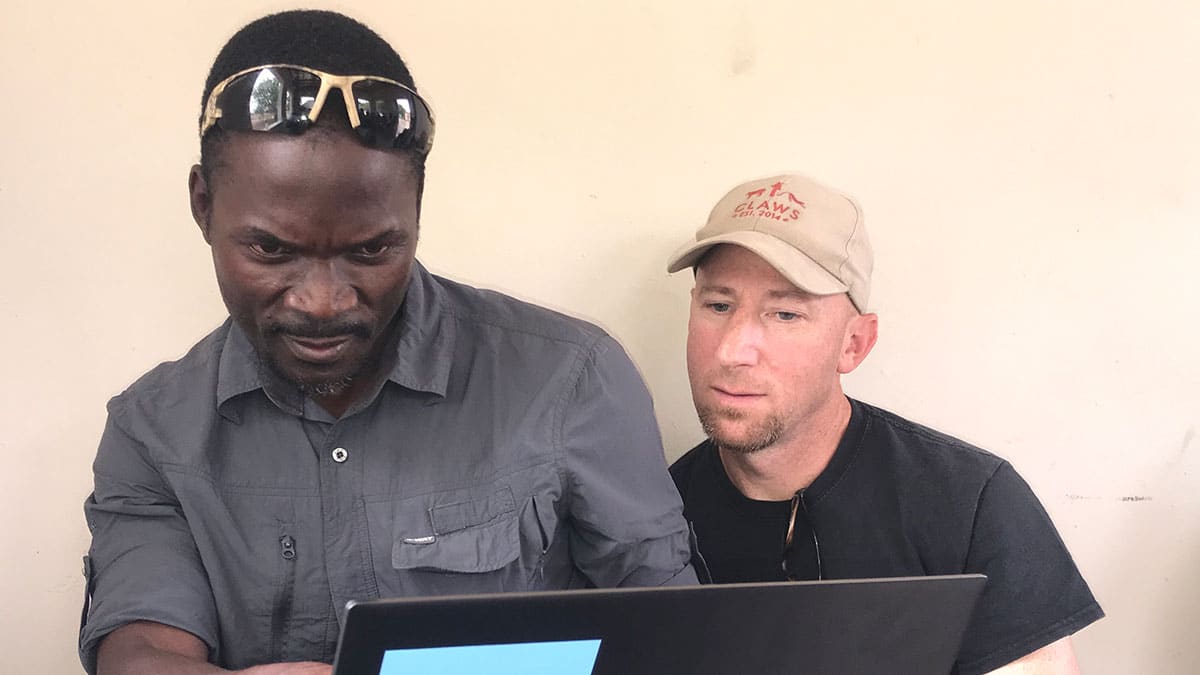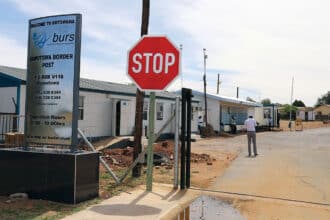CLAWS get firm grip on lion conservation
Decimated lion prides in the Okavango Delta rangelands are making a comeback, thanks to an innovative programme that helps reduce human-lion conflict in the area.
When different nations made pledges towards achieving the world’s collective climate goals at the last COP 27summit in Egypt, closer to home, a conservancy organization was already steps ahead using scientific research with a climate benefit, to promote human/wildlife coexistence.
Communities Living Among Wildlife Sustainably ( CLAWS), a non-profit conservancy organization has responded to the urgent need to develop innovative approaches to promote people’s coexistence with animals.
The organization works with farmers to improve livestock management to protect rangelands and to reduce human-lion conflict in the northern Okavango Delta.
The initiative was adopted in response to rising concerns in Northern Botswana where communities were killing lions in retaliation for killing their livestock.
CLAWS’ efforts are designed to promote coexistence between people and lions and to reduce the high-levels of retaliatory killings that occurred prior to the onset of the project.
New research suggests that these efforts are effectively reducing retaliatory killings and improving tolerance between people and lions.
Poisoning incidents have since dropped significantly from losing 50% of the area lions in 2013 to less than 5% in each year since the inception of the programme aptly termed ‘PRIDE IN OUR PRIDES’.⠀
The programme, a two-pronged initiative with a focus on high priority species and known conflict areas, merges technology with tradition to engage communities in lion conservation in the critical Okavango Delta.

CLAWS founder Dr Andrew Stein and his team, have since set up camp in Eretsha village where they have developed a first of its kind technology that alerts villagers when collared lions approach livestock areas.
In partnership with the University of Siegen, CLAWS has designed this one-of-a-kind lion alert system. Over 100participants receive messages to their specific preferences (text or voice message) and language (Setswana or English) including the name and distance of the specific lion.
“As we put the tracking collars on, it enables us to follow the movements of the lions to understand where they move within the system, then we can follow them to see what they are eating,” Dr Stein says adding that this also helps them determine which of these lions are actually causing problems and which ones are not.
As part of this programme CLAWS have introduced the alert system whereby when a lion gets within 3km of a cattlepost or homestead or 5km of one of the five major villages of Eretsha, Gunotsoga, Beetsha, Seronga and Gudigwa, it will release an alert going directly to the cellphones of the individuals living within that affected community. “So if a collared lion gets within 5km of Eretsha village for example, any villager from Eretsha that is signed up for the system will receive an sms with the name of the lion and distance that the lion is to their village, in real time. They then take the necessary preventative action,” Dr Stein explains.
CLAWS realized quite early on in their research that most of the people that own livestock in this area were not herding their livestock and because of that their cattle would range quite far into the delta. Cattle herding was historically practiced and it helped farmers maintain healthy ecosystems and protected cattle from predation.
Dr Stein and his team now resurrecting this ancient traditional herder system to reverse the impact of overgrazing and not only reduce lion conflict but also build capacity.
“We actually put satellite trackers not only on the lions, but on cattle and what we found was some of the cattle from the villages were going 17km deep into the Okavango, deep into lion territory. And many of the owners when we showed them on the map, had no idea that their cattle were going so far and for so long.
But also because the cattle were not being herded, Dr Stein says there was cause for climate concern as they stayed in the same areas, overgrazing and causing desertification, erosion and the top soil getting blown away and trapping a lot of carbon. “So as we think about carbon dioxide in the atmosphere as a problem for climate change, actually the way we herd our cattle can actually contribute to the problem or can help address the problem if you move cattle in a particular way.”
In 2018, CLAWS supported the establishment of the first communal herd in Botswana. There are now two herds with 600 and 230 cattle respectively in Eretsha, with plans to expand the programme to neighbouring villages.
Communal herds reduce conflict by increasing efficiency – now a handful of people are responsible for protecting the large herds that mimic the natural formation of wild herbivores, moving in tight groups as anti-predation behaviour.

Paul Dube is a Chief herder and supervisor to other certified herders who monitor livestock health and protect them from predators, allowing community members to engagein other livelihood activities knowing that their cattle are safe. “Cattle grow grass but if they are not managed properly, they destroy grass. We have a grazing plan whereby we demarcate our area into four. We graze the cattle in one area for a week before we move to the next section the following week. That way we give the area enough time to grow back. In the process we’re in a way using these animals as a machine to break the ground. That’s hooves of more than 400 animals tilling the land, hence we call them ‘hooving machines’ that doctor the land. Whilst they’re doing that they are also defecating and urinating and the area gets fertilized and we’re assured of a better grass yield next year.”
Dr Edwin Mudongo, the CLAWS Research Coordinator further buttresses Dube’s assertions on the climate change aspect. “Following on the grazing planning and putting dung in the soil and fertilising, that is putting carbon back in the soil. It’s a way of tapping carbon from the atmosphere, down into the soil and that on its own is climate smart. We also educate the farmers about the value of putting the herds in the crop fields before ploughing so they fertilise the land. By doing so that is also putting a lot of carbon in the soil and the farmers can also harvest more from very little, so all this is contributing to reducing climate change,” he says.
In addition to the program, CLAWS has also introduced a mobile quarantine which is expected to save the farmers a significant amount of money on transport of their cattle to feedlots in favour of free range feeding.
Department of Veterinary Services also certifies the beef as free of Foot and Mouth Disease (FMD) with weekly checks. The Botswana Meat Commission (BMC) pays the cattle owners market prices, double what they were previously earning.

Chairperson of the farmers committee, Monnaaloso Saanga, is excited at the new developments brought about by CLAWS and together with the other farmers, he is happy that in the end, they will receive greater market access and livelihood security while adapting traditional herding practices for modern markets. “The good thing about it is that CLAWS are also providing us with the quarantine service where our cattle will be cleared for export and transported to the BMC abattoirs without any extra costs on our part. All we’re required to do as farmers is participate in the project that will not only conserve our wildlife, but will also keep our cattle safe from predation and diseases”.
Research with collared lions has shown connectivity within the Kavango-Zambezi Transfontier Conservation Area (KAZA TFCA) landscape, highlighting that lions exist in areas previously unknown.
Paying attention to these movements can help to support thriving populations, increasing the benefits that apex predators bring to ecosystems, and to humans in the form of monetary gain from tourism.
Further, through the predator-proof enclosure initiative, CLAWS works with communities to reduce incidences of livestock killings, using traditional weaving techniques and locallysourced, sustainable materials.
Combined with the lion alert system, this initiative is said to have reduced conflicts while increasing income to the communities, with tourism operators in the region committed to buying beef at a premium price.








